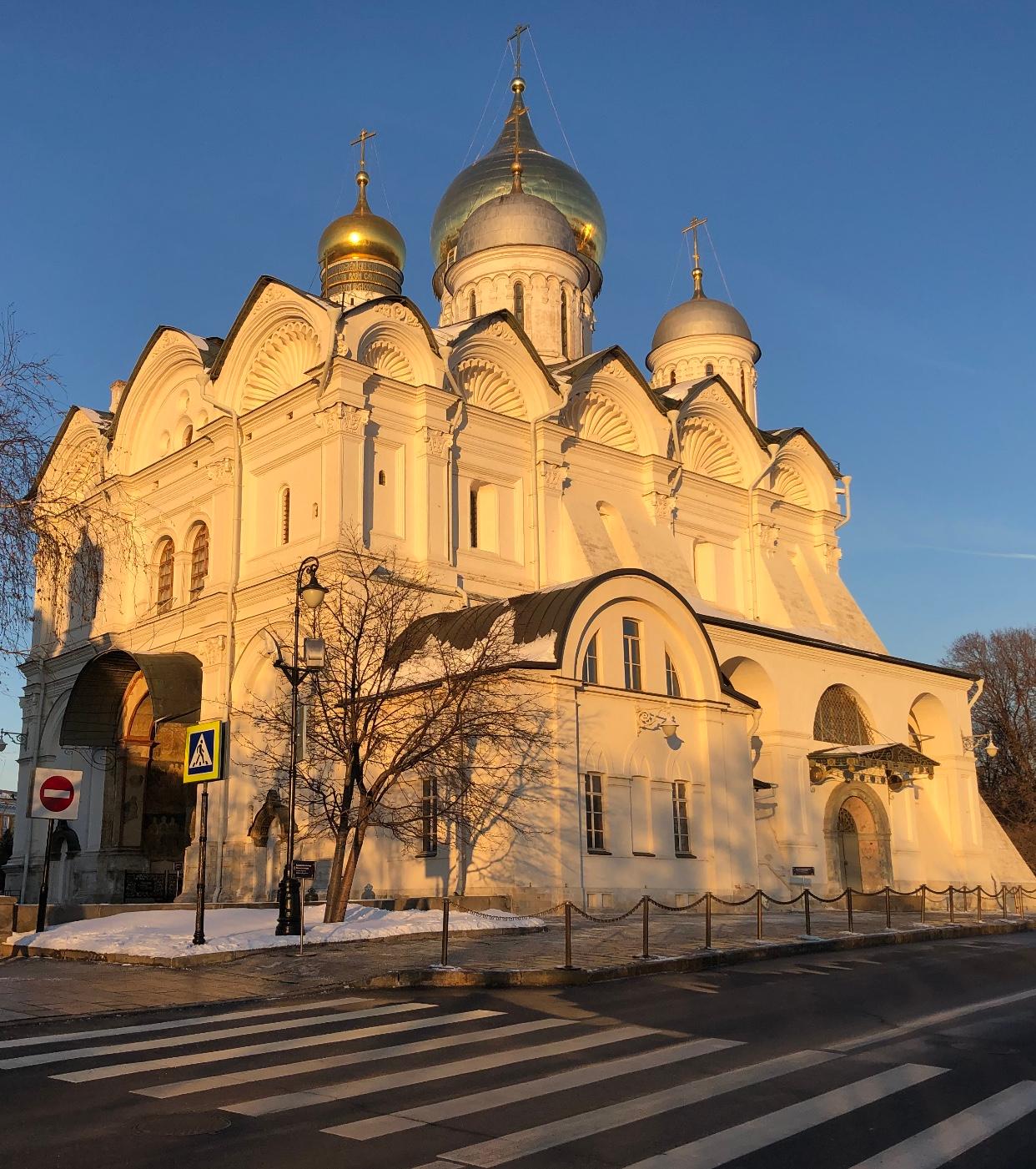Архангельский собор, построенный в 1505–1508 годах итальянским архитектором Алевизом Новым, – самый своеобразный памятник в целостном ансамбле Соборной площади Московского Кремля. С возведением Архангельского собора закончилась перестройка великокняжеской резиденции, задуманная и осуществленная Иваном III, великим князем, государем «всея Руси» (1462–1505). В период его правления завершился процесс объединения русских земель, окончательно освободившихся в 1480 году от монголо-татарского ига, возрос международный престиж набиравшего силу Московского государства. Отражением этого явилось грандиозное строительство в Кремле. В той идеологической программе, которую вкладывал в преобразование столичного Кремля сам заказчик, немаловажная роль отводилась Архангельскому собору, главному княжескому храму, ставшему к тому времени усыпальницей московского великокняжеского дома.
Храм посвящен архангелу Михаилу, небесному покровителю князей в их ратных подвигах. Великие князья приходили сюда для молитвы перед тем, как отправиться на войну, – в надежде вымолить духовную силу на подвиг. Здесь приносили клятву верности великому князю его младшие братья. Позднее в храм на поклонение гробам предков направлялся царь во главе торжественной процессии после церемонии венчания на царство.
Текст и фотографии представлены историко-культурным музеем-заповедником «Московский Кремль»
The facades of the Archangel Cathedral are created in geometrically clear and plane order decoration combined with typically Russian six-columned cross-domed structure with canonic 5 domes.
The zakomaras in the form of large relief shells, once decorated with Gothic violets, are separated from the main building by an entablature.
Round-shaped windows-roundels in the central zakomara of the western portal are unusual for Russian churches. Originally, the two colours of the facades — red-brick walls and white details – accented their order construction.
Quite new was the construction of the main entrance to the cathedral in the form of a promising portal, placed in a deep loggia,and the white-stone portals' ornamentation typical of the Italian Renaissance.
The Renaissance decoration of the facades and the interior of the Kremlin's Archangel Cathedral had a significant impact on the further development of Russian architecture, becoming a generally accepted source and model.
Nowadays, the Archangel's Cathedral is a frequented Kremlin’s museum.
It houses 47 tombstones and 2 reliquaries of the dynastic necropolis of Moscow Great Princes and Tsars: Ivan Kalita, Dmitriy Donskoy, Ivan III, Ivan the Terrible, tsarevich Dmitriy, Tsars Mikhael and Alexei Romanov were buried here. The first Russian Tsar Ivan the Terrible and two his sons are buried in a special tsar's shrine in the altar part of the cathedral.
The cathedral's wall-paintings and 1680-1681 iconostasis are of great interest and value. The icon of Archangel Michael, the oldest in the iconostasis, is believed to have been created for Princess Eudokia, the wife of Dmitriy Donskoi to the memory of the Great Prince and his victory in the Battle on the Kulikovo Field. The cathedral's pillars and walls are painted with portraits of Moscow leaders and their glorious ancestors.
The Archangel's Cathedral is one of the most popular Kremlin museums. Since 1990-s, regular divine services have been recommenced.


.jpg&w=1920&q=75)




%20BEL_0521.jpg&w=1920&q=75)



